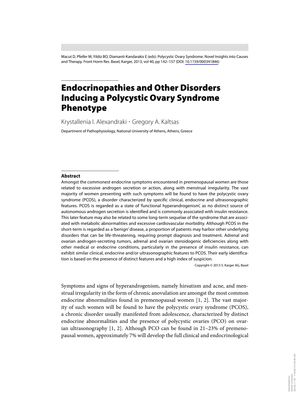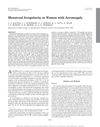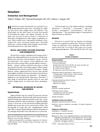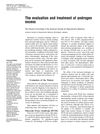Endocrinopathies and Other Disorders Inducing a Polycystic Ovary Syndrome Phenotype
October 2012
in “
S. Karger AG eBooks
”
Polycystic Ovary Syndrome PCOS adrenal tumors ovarian tumors steroidogenic deficiencies hypothalamo-pituitary-ovarian axis insulin resistance luteinizing hormone LH androgen production Cushing's Syndrome hyperprolactinemia thyroid dysfunction acromegaly hyperinsulinemia hyperandrogenism chronic anovulation

TLDR Some conditions mimic PCOS symptoms and need careful diagnosis to treat potentially serious health issues.
The document from 2012 examines conditions that can present with symptoms similar to Polycystic Ovary Syndrome (PCOS), a common endocrine disorder in premenopausal women. It emphasizes the importance of differentiating PCOS from other life-threatening disorders that mimic its clinical presentation, such as adrenal and ovarian tumors, steroidogenic deficiencies, and various medical or endocrine conditions. The prevalence of these disorders in women with PCOS-like symptoms is less than 7%, but they require prompt diagnosis and treatment due to their potential morbidity or mortality. The document also explores the pathogenesis of PCOS, suggesting it is influenced by genes regulating the hypothalamo-pituitary-ovarian axis and insulin resistance, with insulin and luteinizing hormone (LH) enhancing androgen production. Additionally, it discusses the association of conditions like Cushing's Syndrome, hyperprolactinemia, thyroid dysfunction, acromegaly, and hyperinsulinemia with PCOS-like symptoms. The document concludes that while most women with hyperandrogenism and chronic anovulation have PCOS, a careful differential diagnosis is crucial for identifying and treating other disorders that can present similarly, especially in the context of insulin resistance and hyperinsulinemia.





